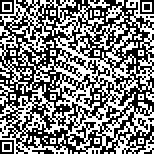| This article has been:Browse 1535Times Download 1183Times |

scan it! |
|
|
| DOI:10.13522/j.cnki.ggps.20180091 |
|
| An Improved Support Vector Machine Method for Estimating Saline-alkali Soil from Remote Sensing Imagery |
|
XU Cundong,ZHANG Rui, WANG Rongrong,CHENG Hui,LIU Luyao,WANG Yan,ZHU Xinglin
|
|
1. School of Water Conservancy, North China University of Water Resources and Electric Power, Zhengzhou 450045, China; . Collaborative Innovation Center of Water Resources Efficiency and Protection Engineering, Zhengzhou 450045, China;3. Henan Provincial Hydraulic Structure Safety Engineering Research Center, Zhengzhou 450046, China
|
| Abstract: |
| 【Objective】 Remote sensing technology has been increasingly used in agriculture and this paper presents an improved support vector machine method to estimate saline-alkali soil from imagery obtained from UAV.【Method】 We took the first irrigation district at the Jingtai Electric Power Irrigation District of Gansu Province as an example, and the Trimble UX5 fixed-wing UAV was used to collect the remote sensing imageries of the area. A new method based on the AdaBoost algorithm for classification of SVM was proposed to estimate the area of saline-alkali soil. 【Result】Compared with traditional classification methods, the proposed SVM classification method significantly improved the calculation with an overall accuracy of up to 96.55% and Kappa coefficient of 0.957 3. Compared with the measured data, maximum and average errors of the improved methods were 5.4% and 2.16% respectively. 【Conclusion】 The improved SVM classification method proposed in this paper could effectively estimate saline-alkali soil based on remote sensing imageries. |
| Key words: UAVs at high altitude; saline alkali; AdaBoost; support vector machines; irrigation district |
|